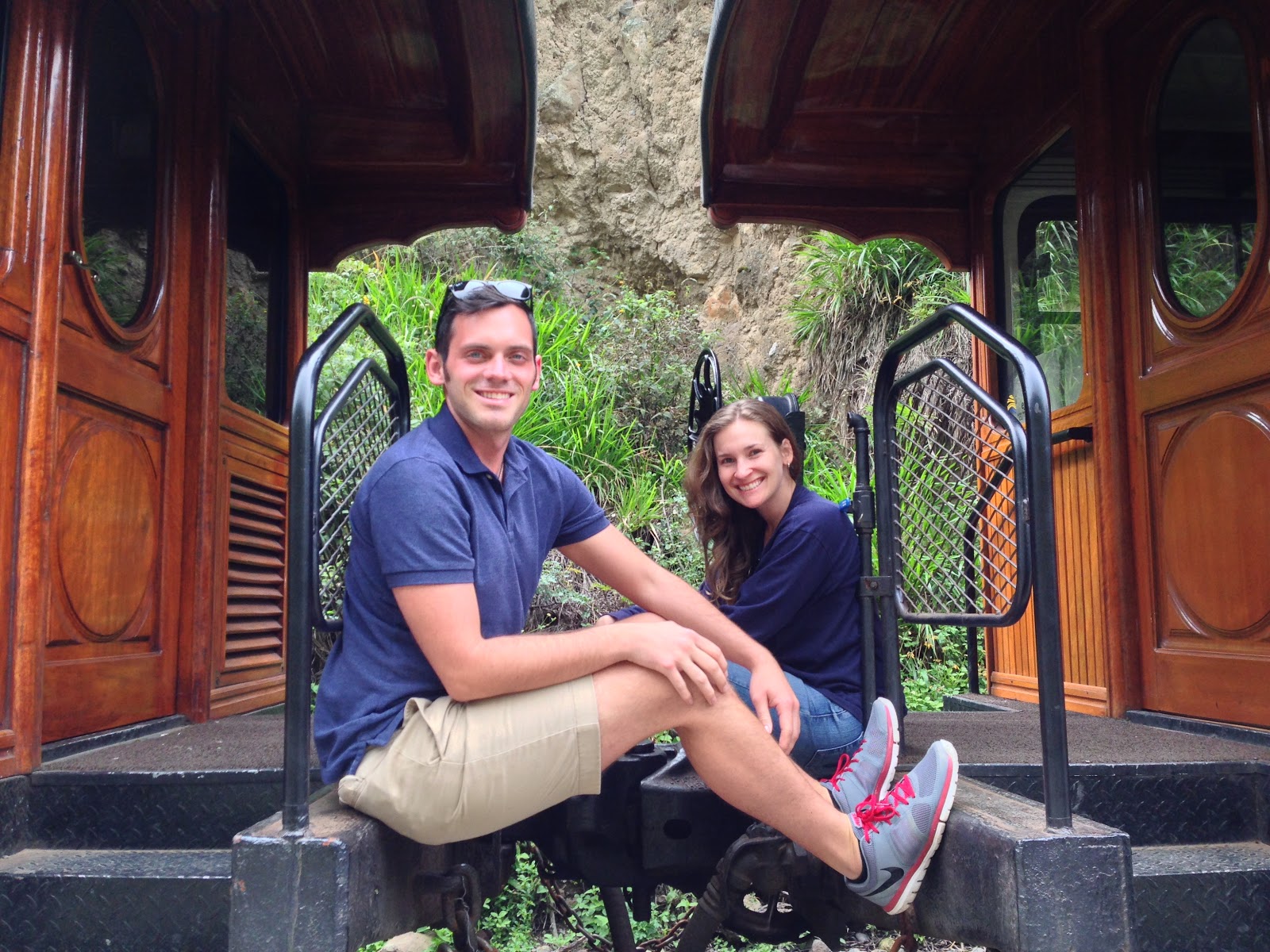Today we left Cuenca. It was a sad morning saying goodbye to mi madre Nancy, my Universidad de Cuenca friend Gabbi, and our Ecuadorian coordinator and life saver Ana. We are taking a bus to Quito which is a ten hour drive, but we are splitting it up over two days and stopping at historical sites along the way.
(Ana and I)
(Gabbi and I)
Our new tour guide, Ami, took us through the Ecuadorian highlands. Along with the other guides we have had, he spoke about the currency change Ecuador implemented in 1999. The Ecuadorian currency was 25,000 to $1 and the banks froze the peoples accounts so they could not remove all of their money for an entire year. She said as a result, people invested their money elsewhere or into other things such as cows. Many of these people left Ecuador to seek a better life. Migration is destroying and reshaping smaller communities around the country.
This was very evident in the highlands because Ami told us that these areas were desolate 10 years ago but are now extremely populated. You can see large, modern houses in the hillsides and most of them have colorful roofs and windows that are multiple colors or reflective like mirrors. These are symbols of migration. Ami told us a new generation is emerging, one which is parent-less - meaning that often both parents will migrate to another country and children are left with their grandparents and neighbors, or have to raise themselves and siblings. Families will send money back to Ecuador and as a result you see the modern influences on the small, rural communities. After going through the highlands we reached Ingapirca.
Ingapirca is a ancient Inca site. I love archaeological sites and historical zones such as this. Ingapirca was a stop along the Inca trail and it was also the intersection of a secondary Inca road that ran/runs east to west.
(Overview of the site)
(Bro - O-H-I-O)
(Top of the castle at the site)
(In the whispering room)
(East - West Secondary Inca road)
(Center of town)
(Awesome "Smokey" cat)
(Bridge connecting two parts of the town)
(Middle of the train bridge)
(Chillin with Andrew)
We were headed to Nariz del Diablo or the "Nose of the Devil". We took a train through the mountains to see the landscape and to travel to another town. This was amazing! I have always loved trains since I was little, and this was rustic train, riding along the cliffs and mountain ridges.
(Hanging off car 1566)
(Halfway through the ride)
Construction started in 1875 with the purpose to connect the coast to Quito and other larger cities. The area is called the Devils Nose because over 2,500 workers perished while building this railroad. The people in the community once believed that there was evil in the mountains, which was why so many people were dying.
(Riding along the cliffs)
This part of the line is only used for touristic purposes now. When we got off the train we were greeted by people from the local community. They were performing traditional dances and music. So sweet. Also being the animal lover that I am, I made friends with Principo the horse, and this little guy cat who was the bomb. I know you're thinking, eww Justin why the hell did you pick that cat up? He was awesome and I miss my cat, end of story.
(Principio)
(Rach and I)
Rachel and I headed up to the top of the hill to a museum, that was once a church, to learn more about the railroad and community. I relaxed at the top of the hill and had a cold beer just admiring the scenery. We boarded the train and headed back to the city. We are now on our way to another city, Salinas, to spend the night. It was very significant in the 16 century and exported mainly to France.
(Taking in all of the scenery)
Today has been a nice and relaxing day. The communities that we have visited have less people than Ohio State. It's so amazing to see these communities thriving and maintaining their traditional heritage. In 1875, the train was called El Tren de sueños, and to this day it is connecting distant areas of the country, continuing to help people meet their dreams. The Ecuadorian government has a national saying posted in most areas that is "Ama la vida" or "Love Life" I can confidently say that today, I can embrace "Ama la vida" - I don't want this adventure to end.













No comments:
Post a Comment